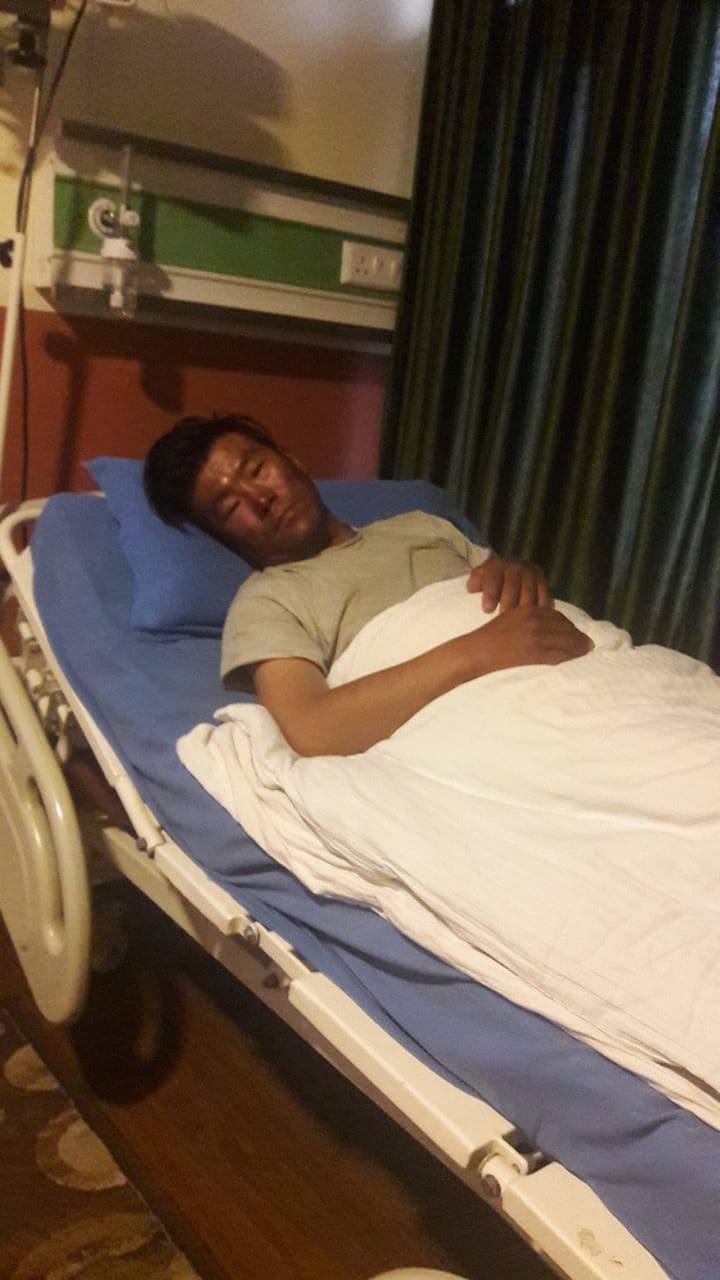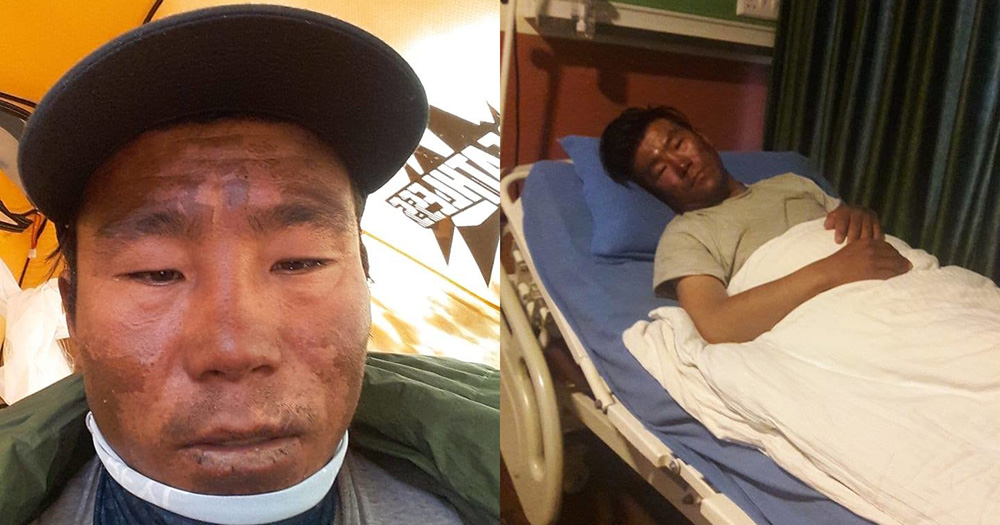On April 25, a Malaysian doctor was rescued from the Himalayan peak of Mount Annapurna, after having been stranded there for two nights in the open, CNA reported
The survival of the 48-year-old Singapore-based anaesthesiology consultant, Chin Wui Kim, at an elevation of about 7,500m was reportedly a "miracle", according to climbing experts cited by CNA.
Chin was initially admitted to the intensive care unit of Nepal's Mediciti Hospital in Kathmandu for his critical condition.
But Nepal-based The Himalayan Times reported that he has since been airlifted to Singapore, as of April 28.
Survival was only possible due to sacrifice of Sherpa guide
Separately, Himalayan Times further reported that Chin's survival was largely due to the effort of his Sherpa guide, Nima Tshering Sherpa, who gave away his only cylinder of oxygen.
Nima explained that Chin had fallen unconscious while descending from the 8,091-metre summit of Mount Annapurna and stopped moving, just below a point on the mountain called French Couloir, at about 7,750 metres.
Chin then ran out of oxygen in the two cylinders he carried, and Nima was unable to make an emergency SOS call with the satellite phone Chin had with him.
This resulted in Nima deciding to give his only oxygen cylinder to Chin.
Nima said: "It was my duty to save his life, so I gave him my oxygen."
Suffered frostbite, spinal injuries and potentially lethal mountain sickness
Subsequently, Nima recounted that he also began suffering from severe headaches and shortness of breath as the air was too thin at such a high altitude.
It took Nima about five torturous hours to return back to Camp IV, located at roughly a kilometre below the summit.
The Sherpa added that he suffered from frostbite on his toes and neck, along with spinal injuries during his descent.
Other climbers at Camp IV also noticed that Nima had come down with high altitude cerebral edema, a condition in which the afflicted person displays acute mountain sickness that is potentially fatal.
This led to the Sherpa's hospitalisation for two days in Kathmandu.
 Source: Marina Cortes Facebook
Source: Marina Cortes Facebook
How was Chin rescued?
As for Chin, he was subsequently rescued by an organisation called Seven Summit Treks, the South China Morning Post reported.
Four Sherpas were dropped at another camp, at 6,500m, as part of an attempt to reach Chin.
Mingma Sherpa, the head of Seven Summit Treks, said that Chin appeared to be fine but was in no condition to walk.
SCMP highlighted Mingma saying that it was impressive Chin had been able to stay alive at that altitude with no food, water and oxygen, for over 40 hours, thanks to his experience as a seasoned climber.
Mingma said:
"It’s a big thing to stay alive in that altitude without food, water, and oxygen."
Chin's Sherpa guide prays for his speedy recovery
Meanwhile, Nima said that he was praying for Chin's speedy recovery, Himalayan Times highlighted.
He also alleged that there had been a delay in activating search and rescue operations that complicated the situation and endangered Chin.
Breadwinner status in jeopardy
It also appears that Nima's status as the sole breadwinner of a family of six is in jeopardy due to his injuries.
Himalayan Times reported that Nima had starting working as a Sherpa guide to support his poverty-stricken family from the Nepalese village of Khumbu, as he had lost his father to cancer two years ago.
The other members of his family include his 70-year-old mother, wife and three daughters, aged 11, nine and three respectively.
Nima said his eldest daughter of 11 had since become a nun as he could not afford to send her to school.
As for Nima's experience, mountains he has climbed thus far includes Mount Everest, K2, Manaslu and Mount Annapurna itself.
He added that it was Chin who had chosen him to be his climbing guide for Mount Annapurna -- a mountain that is technically difficult, avalanche-prone and has a higher death rate than Mount Everest, both THT and CNA reported.
Top image collage from Marina Cortes Facebook
If you like what you read, follow us on Facebook, Instagram, Twitter and Telegram to get the latest updates.
